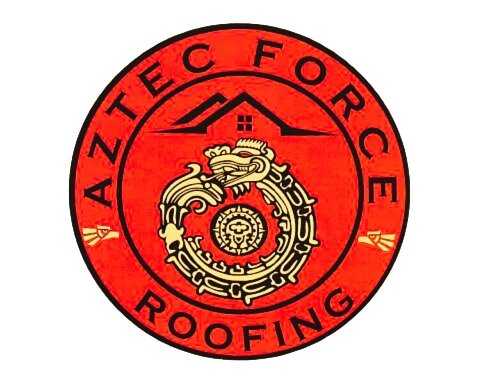TPO (thermoplastic polyolefin) is a single-ply roofing membrane that is popular for its durable roofing solutions, cool roofing system, and cost-effectiveness. Thermoplastic polyolefin is a roofing material that is famous for its energy-efficient roofing, flexibility, and resistance to harsh weather. Flat roof materials are also made up of thermoplastic polyolefin.
TPO Roof Installation: The 2025 Process Guide
TPO roofing is usually used on flat or low-sloped roofs. The installation process generally consists of the following steps:
- Prepare the Roof
Before TPO roofing installation, it is important to prepare the roof deck by cleaning debris and inspecting any potential damage on the roof.
- Insulation Installing
After preparing the roof, install insulation on the roof deck for energy-efficient roofing and create a strong base for TPO roofing, or to increase the lifespan of the TPO roof, which is important maintenance for TPO roofs.
- Adding TPO Membrane
After insulating the roof deck for TPO roofing, lay the top membrane of TPO sheets by measuring and cutting it according to the area.
- Secure the TPO Roof Installation.
After laying the TPO sheets, it’s time to secure the sheets for any adhesive or screws and nails.
- Adhere the Seams
TPO roof sheets are added one at a time, with heat welding at the seam to create a smooth, thin, and water-resistant seam.
- Install Flashing
During the TPO roof installation, flashings are added on the edges of the roof and around vents, or pipes to give a watertight finish and energy-efficient roofing.
- Final Inspection
After the TPO roof installation, professional roofing contractors for TPO do the final inspection, check for any holes or damage, and perform a water test to ensure the water resistance seams. Professional roofing contractors for TPO provide tips for maintenance for TPO roofs.
The Advantages of TPO Roofing: Why is it’s a Popular Choice?
TPO roofing is well known for its durable roofing solution and use of thermoplastic polyolefin in flat roof materials. The TPO roofing benefits of roof installation are as follows:
- Cost-effectiveness
TPO roofing is well known for its cost-effectiveness than any other roofing material. It ensures quality within budget.
- Durable Roofing Solutions
TPO roofing provides durable roofing solutions, strength, and longevity. TPO roofing is essential for flat and low-slope commercial or residential roofs.
- Maintenance for TPO Roofs
TPO roofing is less prone to molds, algae, and fungi due to the use of thermoplastic polyolefin.
- Energy Efficient Roofing
TPO roof installation is white, which means that it is heat resistant and gives energy-efficient roofing.
- Sustainability
TPO roofing is known for its sustainability, as it is made up of chlorine-free material and can be easily recycled at the end lifespan of a TPO roof.
Cost of TPO Roofing: A Breakdown of Expense
TPO roofing, which is mostly used in flat roof materials, is more affordable than any other roof material. In 2025 it is well known for its cost-effectiveness and durable roofing solutions. TPO roof cost per square foot is divided into material cost and installation cost, such as:
| Average TPO roof cost | Material cost | Installed cost |
| Per square feet | $1.00 to $2.50 | $4 to $10 |
The following bar chart will show you the average cost to install or replace TPO roofing:
This table shows that the low-end price of TPO roof installation is 5000$ and it ends up, up to 15000$. But it is best to contact roofing contractors for TPO, and get the estimated rate for TPO roofing or flat roof materials, and the TPO roof cost per square foot.
- Factors to Watch Out: TPO Roof Cost
Multiple factors affect the price of TPO roof installation, such as:
- Roof size
- Membrane system
- Installation type
- Labor cost
- Flashing and protection film cost
- Material cost
- Installation method
TPO Roof Care: Maintenance Tips
After the TPO roof installation, it is essential to maintain it properly. For longevity, strength, and durability, it is important to follow preventive measures. The maintenance tips are as follows:
- Professional inspection twice a year
- Remove dirt and debris
- Address issues promptly
- Minimize foot traffic
- Proper drainage for the lifespan of TPO roof
- Preventive coatings
- Protect flashing and curbs
Conclusion
TPO roofing is an energy-efficient option for residential and commercial roofing systems. It is widely known for its cool roofing system, durable roofing solutions, and the lifespan of TPO roof. With a blend of these facilities, TPO roofing has become a compelling choice for homeowners and commercial property managers.
FAQs
How long does TPO roofing last?
With proper inspection and maintenance, roofing can last up to 15 to 30 years.
Is TPO roof installation energy efficient?
Yes, TPO roofing with a cool roofing system is considered the most energy-efficient roofing system.
How long does it take for a TPO roof installation?
For TPO roof installation, roofing contractors for TPO take up to 1 to 2 weeks.
What is the best coating for a TPO roof?
Silicon coating is the best form of coating for TPO roofs because it provides UV resistance and water resistance.
What to do when I see TPO roofing bubbling?
If you notice that TPO roofs start to bubble and peel, it means that the TPO roofs are not properly installed.
